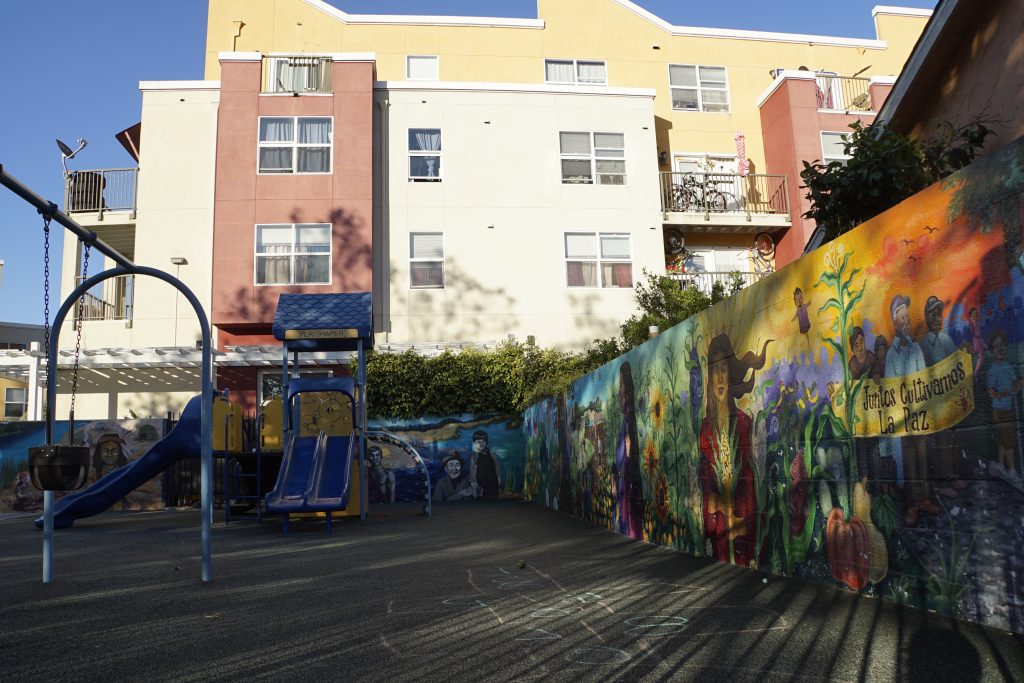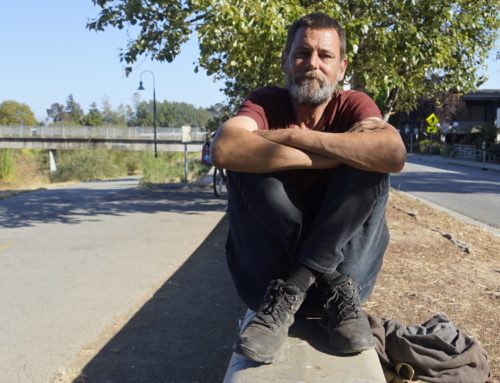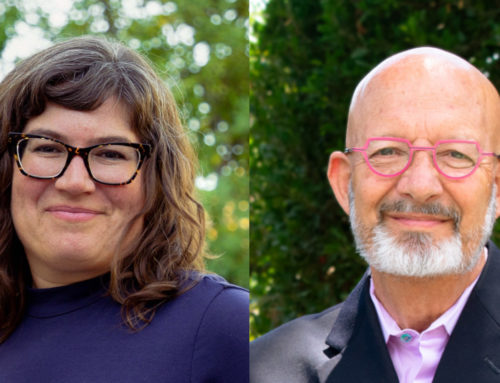Parents and child care providers worry about the risk of transmission of COVID-19. Santa Cruz Local’s Jerimiah Oetting answers your questions about child care rules in Santa Cruz County during the coronavirus emergency: How can we expect young children in daycare to socially distance? What is the county doing to ensure these facilities are safe?
This is the fifth installment of “Santa Cruz Local Answers,” where Jerimiah tackles your coronavirus-related questions.
Submit your questions to santacruzlocal.org/coronavirus. Or email a question to [email protected].
Transcript below.
Santa Cruz Local offers its news stories free as a public service.
We depend on people like you — we call them our Santa Cruz Local members — to chip in $9 a month or $99 a year to make sure vital information can be available to all. Can we count on your help?
TRANSCRIPT
JERIMIAH OETTING: I’m Jerimiah Oetting, this is Santa Cruz Local Answers, where we answer your questions on the local response to COVID-19.
This week’s question comes from Santa Cruz Local member Amanda Smith. She has four-year-old twins. Her question: How can it possibly be safe to send children to child care?
She wrote, “Any parent of young children knows daycare is a germ factory. Can we really expect small children to socially distance?”
Amanda has a demanding job as a UC Santa Cruz professor, and it’s only become more demanding since the shutdown. With her kids at home, she told us she’s losing her mind.
AMANDA SMITH: Did I mention the stress? Let me mention the stress again. [Laughs.]
Yeah, there’s a lot of stress. I mean, there’s two things really. There’s the job is one thing that has been affected by sheltering in place with my children, having less having fewer hours to work. But another thing that’s been affected is like my parenting. You know, I’m not being the best parent I can be right now.
JO: Despite that, Amanda says the risks are too high to send her children to daycare right now. Her kids have had previous health issues, she said.
SMITH: I am actually pretty paranoid about my children. We had a meeting with our doctor and she said, you know, don’t you dare send those kids to daycare anytime soon. And so I’m extremely anxious about the possibility, if things reopen, I’m required to be back on campus, but I don’t want to put my kid in child care yet.
My mental health is not good right now. And my partner and I and other parents I’ve talked to, we all just feel like we’re drowning.
JO: While Smith and other parents agonize over the risks, child care providers have their own difficult choice to make: whether to remain open at all.
Nora Caruso runs the Toddler Care Center in Santa Cruz. It’s been closed since March.
NORA CARUSO: As a child care provider, what keeps me up at night is I can’t decide if I have more anxiety around not opening or opening.
JO: Since the start of the COVID-19 emergency in Santa Cruz County, child care centers could stay open, but only for families of essential workers. That changed last week with new county rules. Now child care centers can serve all families.
But Caruso says she’s not going to reopen anytime soon.
CARUSO: I really want to get back to doing the great work that we do. I know how important it is for young children. I know how important it is for my employees. I know how important it is for the families of the young children we provide. And at the same time, I want to make sure that everybody is safe. And I’m having a really hard time figuring out how to do that.
JO: As a Friday, the county reported 24 confirmed cases of COVID-19 in children since March. That’s almost equal to the 33 cases in the 65 and older age group.
Children are affected by COVID-19 differently than adults, and they may have less severe symptoms, but they can still spread and carry the virus.
CARUSO: There’s no such thing as social distancing with 1- and 2-year-olds. So these children, as asymptomatic carriers, could at any point be infecting the adults that they’re working with. And yet, these are people that are barely making a living wage.
JO: Right now the rules for child care include keeping things clean and sanitary and encouraging social distancing whenever possible. Providers must keep groups of children to 10 or fewer. And to keep those groups stable. That means the same group of children only interacts with each other.

Lisa Hindman Holbert is the program director for child development at Community Bridges in Santa Cruz. They’re one of the county’s largest child care providers. Unlike the Toddler Care Center, Community Bridges is mandated to stay open, because they’re funded by the California Department of Education.
But some of the guidelines from the state can be pretty hard to follow.
LISA HINDMAN HOLBERT: It’s been a very confusing process to navigate, definitely. If you’re a licensed family child care home, there are regulations. If you’re a licensed child care center, there are regulations. If you’re a state-funded center, there are regulations. And then there are some family child care providers that actually receive funding from the California Department of Education as well. So then they have to follow the California Department of Ed rules, as well.
JO: For now, Community Bridges child care centers are still only open for families of essential workers. Hindman Holbert says before she expands services, she wants to see an official state or county document stating that child care is open for non-essential worker families.
We went looking for one of those too. It’s not clearly stated in the county health orders or the state’s official guidelines. Everything from the state links back to a document from April 7 that doesn’t reflect these changes. When we asked the State Department of Public Health for clarification, they sent us a screenshot of their website. It described stage two of Governor Gavin Newsom’s plan to reopen the economy. But even though the website says child care is open to non-essential worker families, we couldn’t find an official signed document.
Hindman Holbert says she needs more guidance than that.
HINDMAN HOLBERT: We are not making any changes at Community Bridges at this point in time, until we have additional state guidance or county guidance on the child care component. So we are maintaining that we’re serving essential workers only.

JO: Even before the COVID shutdowns, child care centers struggled to get by. Now, smaller group sizes means fewer children, and that means less income for providers.
Here’s Nora Caruso again.
CARUSO: In general, child care workers and child care providers operate on razor thin margins. So closing is not an option for many people. And I can tell you that there are dozens and dozens of child care centers in Santa Cruz County that are going to close and will not be able to weather the storm. And this is a county that has already had too few child care slots for the children that live here.
It is tragic, and it’s so vital, right? Child care is the cog that will allow our society to continue to turn.
JO: Amanda Smith says even before the pandemic, finding child care was difficult and expensive. She had to wait to get in. Because she has twins, when one spot opened, she had to pay for it while she waited for a second spot to open at the same location.
SMITH: My first year here, after I paid my rent and my child care, I had no money left. That was it. Now that I don’t have child care available to me, I think, you know, like, it’s suddenly things that I had accepted as common sense become absurd to me. So I’m like, wait, why am I required to work and yet my employer does nothing to pay for my child care, or provide child care for me? You know, I mean, or the government maybe is the better place to aim that question.
So yeah, I mean, I’d like to see a radical change honestly.
JO: We pressed our county health officials with Amanda’s question: How can we possibly expect children to stay six feet apart? And what is the county doing to help ensure that the child care centers stay safe? Here’s Santa Cruz County’s Health Services Agency director Mimi Hall.
MIMI HALL: We know that when we start this kind of staged reopening of the state and our county, we don’t expect there to be no risk. So it’s called lower risk. So when we open child cares because more workers are returning to work, when we start slowly opening, we expect this increase of cases. It’s the exact reason why our first and foremost focus is on getting that testing and tracing capacity up and ensuring that our healthcare capacity can, can meet that increase.
So I know everybody’s worried about risk and I hear so much that people want to completely eliminate risk. It’s not possible.
JO: That’s probably not the answer that parents like Amanda want to hear. Right now, it doesn’t seem like there’s a better way. We tried to find best practices in other communities, but each state has its own guidelines and not enough time has passed to really know what works best.
For parents who want to limit risk as much as possible, and can work from home, the safest option may be to keep their kids with them, even if that feels impossible sometimes. For others, there might not be a choice. And in that case, we’re all hoping that the current guidelines are enough to keep families and child care workers safe.
That’s it for this episode of Santa Cruz Local Answers. If you have a question about coronavirus, we’d love to hear from you.
You can submit your question online santacruzlocal.org/coronavirus
Or you can email [email protected].
I’m Jerimiah Oetting. Thanks for listening.




